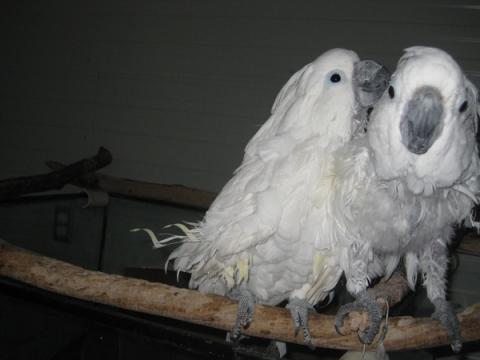
Sometimes losing something that means everything can lead to a calling that means so much more. Such is the case for Wendy Huntbatch who in 1993 founded the World Parrot Refuge in Coombs, British Columbia, after four of her parrots were stolen. She now cares for hundreds of these gorgeous tropical birds, all of which are on the Endangered Species List.
“Starting a parrot refuge was something that was never in my realm of thought,” Huntbatch says, but the night her birds were taken changed everything. She and her husband regularly took the birds with them to the office and, she explains, “the only night we didn’t go back to work someone broke in and stole four of the six birds.”
Heartbroken, Huntbatch, an animal welfare advocate, put the word out, hoping someone would be able to help recover their birds. Instead, people started offering her their own parrots, for which they could no longer care. “Within two weeks we had 15 large birds,” she says. They have since recovered one of their stolen parrots, which eventually turned up at the sanctuary, but the other three have yet to resurface (one of the original six, the mate to one of the stolen birds, never recovered from its loss and passed on as well).
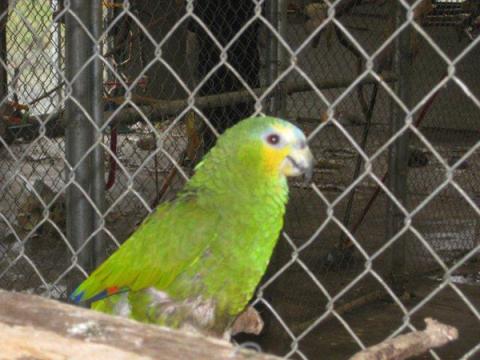
Word continued to spread and birds continued to arrive. “In no time at all our house seemed to get full so we bought a 2000 square foot sanctuary for them, with flights on the outside. I moved 75 birds out of my house and we proceeded to collect another 75,” she laughs. In 2004, the Huntbatches sold that facility and moved their then 400 birds to the refuge’s current location on Vancouver Island.
Now North America’s largest sanctuary for unwanted, abandoned and abused parrots, the World Parrot Refuge is currently home to 800 former pet parrots that represent more than 70 different parrot species. Huntbatch estimates they receive an average of 100 to 120 new birds each year. There are roughly 372 species of psittaciformes (parrots) in the world, and three families: psittacida (true parrots, predominantly green), cacatuidae (cockatoos — mostly white or black) and strigopidae (endangered New Zealand parrots — greys, browns). Sixty-five species are on the Endangered Species List (www.earthsendangered.com).
“All parrots are on the Endangeed Species List, including Budgies and cockatiels,” says Huntbatch. “However, this list is divided into 3 categories — appendix one, two and three. Appendix one covers the critically endangered species. We have a large number of them — Hyacinth Macaws, Scarlet Macaws, Military Macaws, Moluccan Cockatoos, Lesser Sulfur Crested Cockatoos, Citron Crested Cockatoos, Triton Cockatoos, Goffins Cockatoos, Green Cheeked Amazon Parrots, Double Yellowheaded Amazon Parrots, Yellow Naped Amazon Parrots and Red Lored Amazon Parrots. These are all I can think of right now.
“More species will be added to the critically endangered groups in a very short time,” she adds. “Illegal trapping and trafficking of these birds continues at an alarming rate. We hope to get the Canadian Government to close its doors to the importation of wild caught birds.”
Huntbatch’s feathered friends find their way to the World Parrot Refuge from across North America for any number of reasons, but often come from owners that have developed health problems, can no longer afford to keep them or have predeceased their pets. “One of the biggest reasons that we see is ‘I have asthma; my child has asthma or my uncle, my mom.’ There’s always somebody in the home with asthma, which is really brought to the forefront by the allergic reaction to the bird dander. We’ve had 10 birds come in in the last two weeks totally because of asthma,” she says.
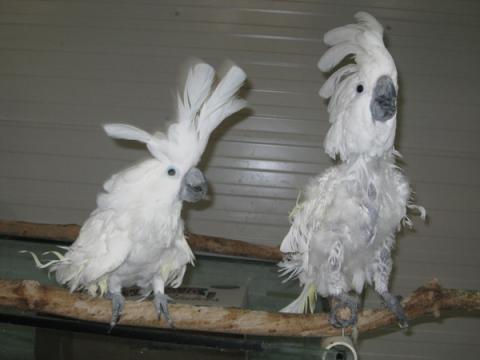
More often than not, the birds arrive at the World Parrot Refuge in poor health, Huntbatch says. “I would say 40 per cent of the birds come to us in good shape; 60 percent come in really bad shape.” Huntbatch, her staff of 17 and a core group of volunteers nurse the birds back to health before integrating them into their ever-growing flock. Once socialized, the birds are free to fly throughout the 23,000 square foot facility.
When a bird has been surrendered to the World Parrot Refuge it becomes their permanent home; Huntbatch does not provide adoption services. “Other sanctuaries take them in and adopt them out; to me that’s a pet store. We provide a home for life.”
Caring for that many birds is an expensive proposition. In 2008, it cost $330,000 to operate the World Parrot Refuge and although they do have both individual and corporate support Huntbatch acknowledges that their single greatest challenge is raising enough money to keep the sanctuary operating. Funding cuts by the B.C. government left a $100,000 hole in their operating budget in 2009 and they are still working to fill that void.
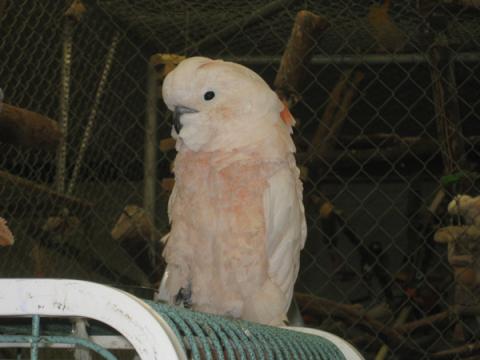
And while they do not provide traditional pet adoption services as a fundraising tool, the World Parrot Refuge does provide the opportunity for supporters to virtually adopt the birds. “It’s the same as if you virtually adopt a child in Africa and you get a picture and some information,” explains Huntbatch. “It never becomes yours; you just financially support it. It’s the same with a parrot.”
The facility also collects gate receipts from visitors and operates a gift shop on site. Named by Travelocity as one of the Top 25 hidden tourism gems in Canada, the World Parrot Refuge is open to the public from 10 a.m. to 4 p.m. every day of the year and attracts thousands of visitors annually.
For the price of admission (ranging from $8 to $12 per person) visitors are taken through the facility where they can see the birds flying free and also have the chance to interact with them; if you visit, be prepared to have at least one bird land on you at some point. The only part that isn’t open to the public is the special needs area, where disabled or injured birds are kept.
“We are also an educational facility,” Huntbatch says. “We try to teach people that parrots do not make good pets. It’s not good for you to have a parrot because you can tame a parrot so you can get within a certain distance or you can touch them, but you cannot domesticate them.”
Huntbatch also cautions those wanting a parrot as a pet that keeping a single bird is a “really a cruel thing to do. Would you like to be the only human being at a pig trough? Pigs are highly intelligent and as close to a human in their body as possible, so it’s not that big a distance, but to be the only one? You can’t speak to anyone!”
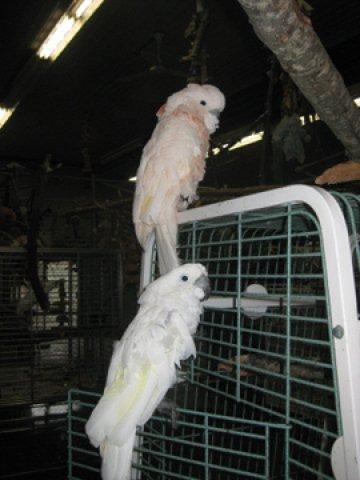
Parrots are also highly social and live in flocks for protection; while some birds eat, others watch for predators, she explains. “But if you are on your own, in a house, in a cage with your wings clipped — that’s their only form of escape is to fly — so they (owners) clip their wings, put them in a barred cage and then, out of what they feel is a respect for parrots, they put them in the window so they can see outside and watch all the birds. Well, of course, they can also see the predators and then these poor things can’t escape, so it’s a terrifying experience,” Huntbatch says. “At least if there are two of them, the security is there; they have a friend.”
Huntbatch’s free flying brood need not ever worry about feeling trapped again. She is currently building another flight for the budgies and cockatiels that are often just dropped off at their door and is hoping to build a veterinary hospital on site, which will serve as a training facility for future avian veterinary specialists and provide another steady income stream and volunteers for the facility.
When asked what she finds most rewarding about operating the World Parrot Refuge, Huntbatch says it’s “knowing that they are not going to go from home to home to home on the pet adoption go-round. And they’ll never be locked in cages again. And they’ll never have somebody throw something at them or scream at them. And they’ll never have to be covered with a blanket and told to shut up. We hear that from the birds so many times; if one bird screams, another one will say, ‘Shut up! Shut up now!’ so you know what life a bird has lived.
“You know when you see children that have gone from foster home to foster home to foster home and they become the naughtiest kids in the world and end up in jail?” she continues. “Well that’s what happens to parrots. It’s a version of parrot jail, (to be kept) in somebody’s basement with a blanket over them.”
For birds lucky enough to reach the World Parrot Refuge, it’s like receiving a get out of jail free card. “It’s a great place,” Huntbatch states. “They get to have friends; they get to fly; yes, it’s not total freedom. It’ll never be their own little country, but the captivity is probably the best they’ll ever get.”
For more information, visit www.worldparrotrefuge.org.
30 Winter Outfit Ideas to Kill It in 2020 - Fashion Inspiration and Discovery